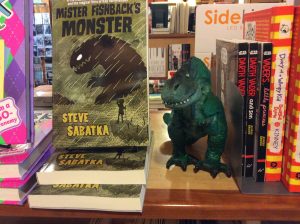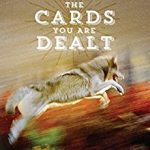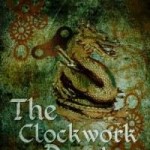 This week is Banned Books Week.
This week is Banned Books Week.
And in case you haven’t heard, book-banning is in full swing in the United States. In the 2021-2022 school year, more than 1,600 books were banned across 32 states. Texas and Florida lead the nation in book banning.
PEN America leads the opposition against banning books. Founded in 1922, PEN stands for poets and playwrights, essayists and editors, and novelists. Its founding members included Willa Cather, Eugene O’Neill, Robert Frost, Robert Benchley, and Booth Tarkington (the first president). It is now part of PEN International (founded in 1923).
Current and past members include Edward Albee, Maya Angelou, James Baldwin, E.L. Doctorow, Roxane Gay, Langston Hughes, Barbara Kingsolver, Norman Mailer, Thomas Mann, Arthur Miller, Toni Morrison, Philip Roth, Salman Rushdie, Richard Russo, Sam Shepard, Susan Sontag, John Steinbeck, Anne Tyler, and many other well-respected people in the literary world.
In February, the ACLU joined with librarians in Missouri to file a federal suit over Senate Bill 775, a school library obscenity law that opponents say forces librarians to censor their collections under the “threat of arbitrary enforcement of imprisonment or fines.”
In March, library advocates in Llano County, Texas, won a preliminary injunction and order to reinstate more than a dozen banned titles at their local public library and to stop future bans while the lawsuit proceeds. In his order, federal judge Robert Pitman held that the library leaders infringed the constitutional rights of their users by unilaterally removing books they deemed inappropriate or disagreed with.
And in May, PEN America and Penguin Random House joined forces with a group of authors and parents to sue school administrators in Escambia County, Florida, over the removal of allegedly inappropriate books from school libraries. Jeffrey Sachs, a professor at Acadia University who tracks free speech in education, claimed “Every single Republican-controlled state where the legislature is currently in session is considering a new ‘educational gag order’ bill. Many even target university libraries ….” It is increasingly focused on an evolving array of subjects, themes, and identities — including U.S. history, race and diversity, social emotional learning, LGBTQ+ identities, and sex education.
A lawsuit in Texas is perhaps the most high-profile suit in an escalating legal counteroffensive being waged by freedom to read advocates in response to an ongoing, politically-motivated surge in book bans and state-level legislative attacks on the freedom to read. Republican State Representative Matt Krause sent a letter to the Texas Education Agency asking if any of the schools in the state have the books listed on a 16 page spreadsheet, as well as how much schools had spent on these 850 books. Supposedly trying to protect the teenagers, he none the less included Teen Legal Rights, Gender Equality and Identity Rights (Foundations of Democracy), Equal Rights, We the Students: Supreme Court Cases for and About Students, and Peaceful Rights for Equal Rights
An article in PEN stated, “The Supreme Court has held that ‘one is not to have the exercise of his liberty of expression in appropriate places abridged on the plea that it may be exercised in some other place.’
Under some of the laws, librarians can be fined or imprisoned for not purging books the lawmakers have deemed inappropriate.
Here are some of the books being banned in many areas. Charlotte’s Web, Maus, (Holocaust graphic novel), The Handmaid’s Tale, the Harry Potter books, To Kill a Mockingbird, John Steinbeck’s Of Mice and Men, The Bluest Eye by Toni Morrison, Looking for Alaska (NY Times Bestseller, NPR’s top Ten Best-Ever Teen Novels, Time Magazine’s 100 Best Young Adult Novels of All Times, and a TV miniseries), The Perks of Being a Wallflower, by Stephen Chbosky (NYT Bestseller, American Library Association Best Book for Young Adults, Best Book for Reluctant Readers, major motion picture), and The Lion Children’s Bible: Stories from the Old and New Testaments (banned in Florida).
And considered to be one of the most influential books of the 21st century, Extremely Loud & Incredibly Close, by Jonathan Safran Foer, has been banned in many schools. It deals with themes of death, trauma, and grief in the wake of the September 11 terrorist attacks.
Maybe the book 1984 should be renamed 2023.
Please leave a comment – your thoughts on banned books.

 early animated movies when each scene would require twenty-four graphic panels for a single second of a movie. Steve lives in Newport, Oregon and teaches at Newport High School. Steve writes short stories (has won the NETWO short story contest one year) and in 2016, published a young adult novel about teenagers finding a … well, I’d better let Steve tell you.
early animated movies when each scene would require twenty-four graphic panels for a single second of a movie. Steve lives in Newport, Oregon and teaches at Newport High School. Steve writes short stories (has won the NETWO short story contest one year) and in 2016, published a young adult novel about teenagers finding a … well, I’d better let Steve tell you.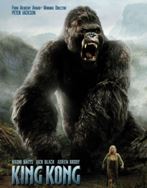 ring circus or screaming carnival ride. But when Kong, shaggy, bleeding, and defeated, let go and fell one hundred and two stories to the Manhattan pavement, I lost it, son, flipped out, crying and screaming so loudly that my dad thought a police car, old-style siren blaring, had pulled up in our front yard. The King was dead and I was not happy about it. Dad consoled my by explaining that Kong wasn’t dead – because he’d never really been alive. It had all been a trick. A special effect.
ring circus or screaming carnival ride. But when Kong, shaggy, bleeding, and defeated, let go and fell one hundred and two stories to the Manhattan pavement, I lost it, son, flipped out, crying and screaming so loudly that my dad thought a police car, old-style siren blaring, had pulled up in our front yard. The King was dead and I was not happy about it. Dad consoled my by explaining that Kong wasn’t dead – because he’d never really been alive. It had all been a trick. A special effect.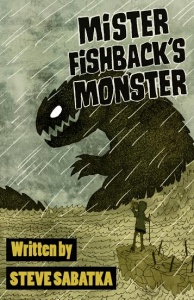 my heroes and all their frame-by-frame voodoo. So I wrote a young adult novel about a teenage monster nerd (me, basically), and his two oddball buddies – a Vietnamese refugee, and a 250 pound wrestler – trying to explain the scaly, hairy, multi-toothed horror that has just washed up dead on the Oregon Coast.
my heroes and all their frame-by-frame voodoo. So I wrote a young adult novel about a teenage monster nerd (me, basically), and his two oddball buddies – a Vietnamese refugee, and a 250 pound wrestler – trying to explain the scaly, hairy, multi-toothed horror that has just washed up dead on the Oregon Coast.